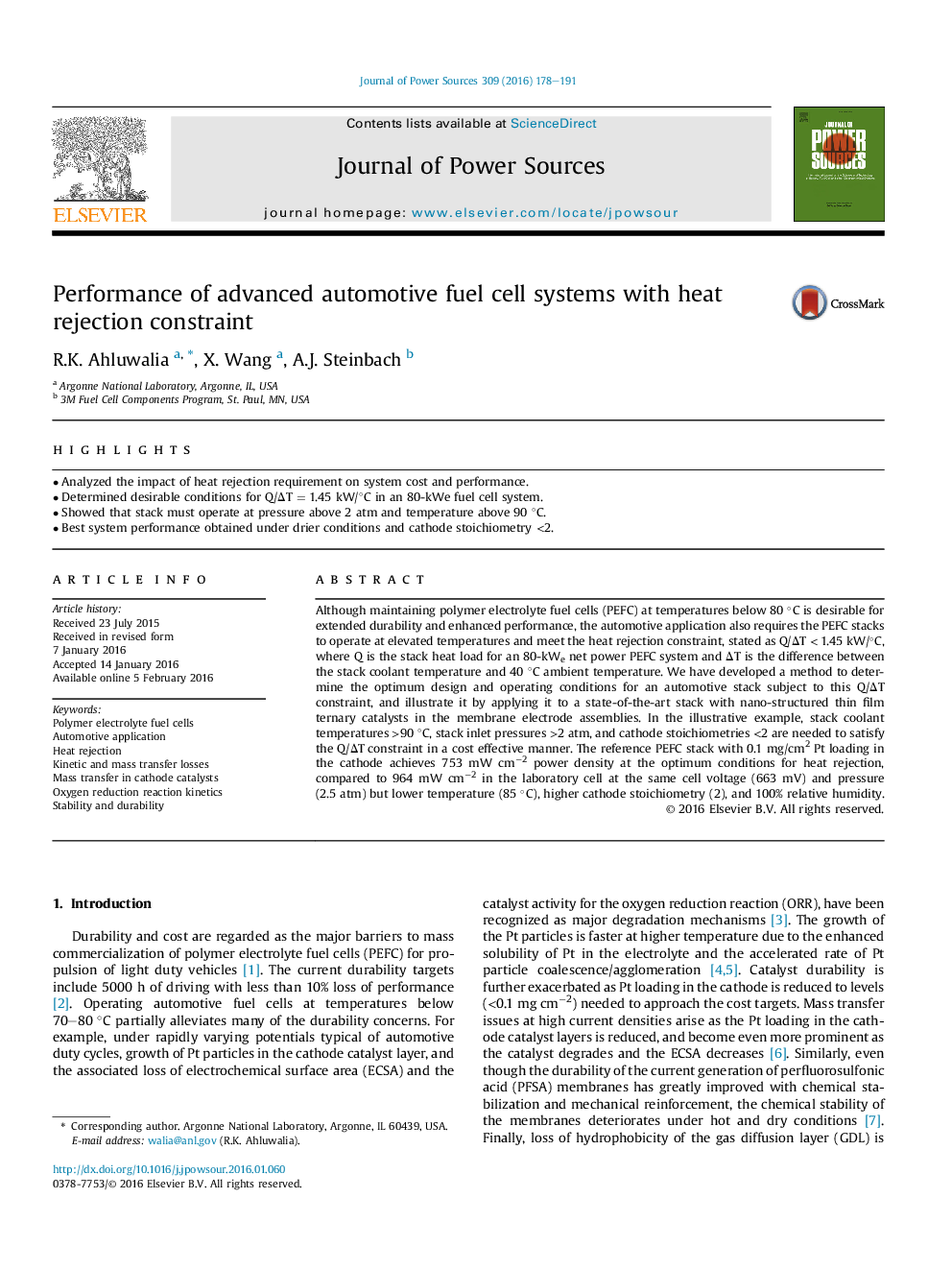| Article ID | Journal | Published Year | Pages | File Type |
|---|---|---|---|---|
| 7728627 | Journal of Power Sources | 2016 | 14 Pages |
Abstract
Although maintaining polymer electrolyte fuel cells (PEFC) at temperatures below 80 °C is desirable for extended durability and enhanced performance, the automotive application also requires the PEFC stacks to operate at elevated temperatures and meet the heat rejection constraint, stated as Q/ÎT < 1.45 kW/°C, where Q is the stack heat load for an 80-kWe net power PEFC system and ÎT is the difference between the stack coolant temperature and 40 °C ambient temperature. We have developed a method to determine the optimum design and operating conditions for an automotive stack subject to this Q/ÎT constraint, and illustrate it by applying it to a state-of-the-art stack with nano-structured thin film ternary catalysts in the membrane electrode assemblies. In the illustrative example, stack coolant temperatures >90 °C, stack inlet pressures >2 atm, and cathode stoichiometries <2 are needed to satisfy the Q/ÎT constraint in a cost effective manner. The reference PEFC stack with 0.1 mg/cm2 Pt loading in the cathode achieves 753 mW cmâ2 power density at the optimum conditions for heat rejection, compared to 964 mW cmâ2 in the laboratory cell at the same cell voltage (663 mV) and pressure (2.5 atm) but lower temperature (85 °C), higher cathode stoichiometry (2), and 100% relative humidity.
Related Topics
Physical Sciences and Engineering
Chemistry
Electrochemistry
Authors
R.K. Ahluwalia, X. Wang, A.J. Steinbach,
